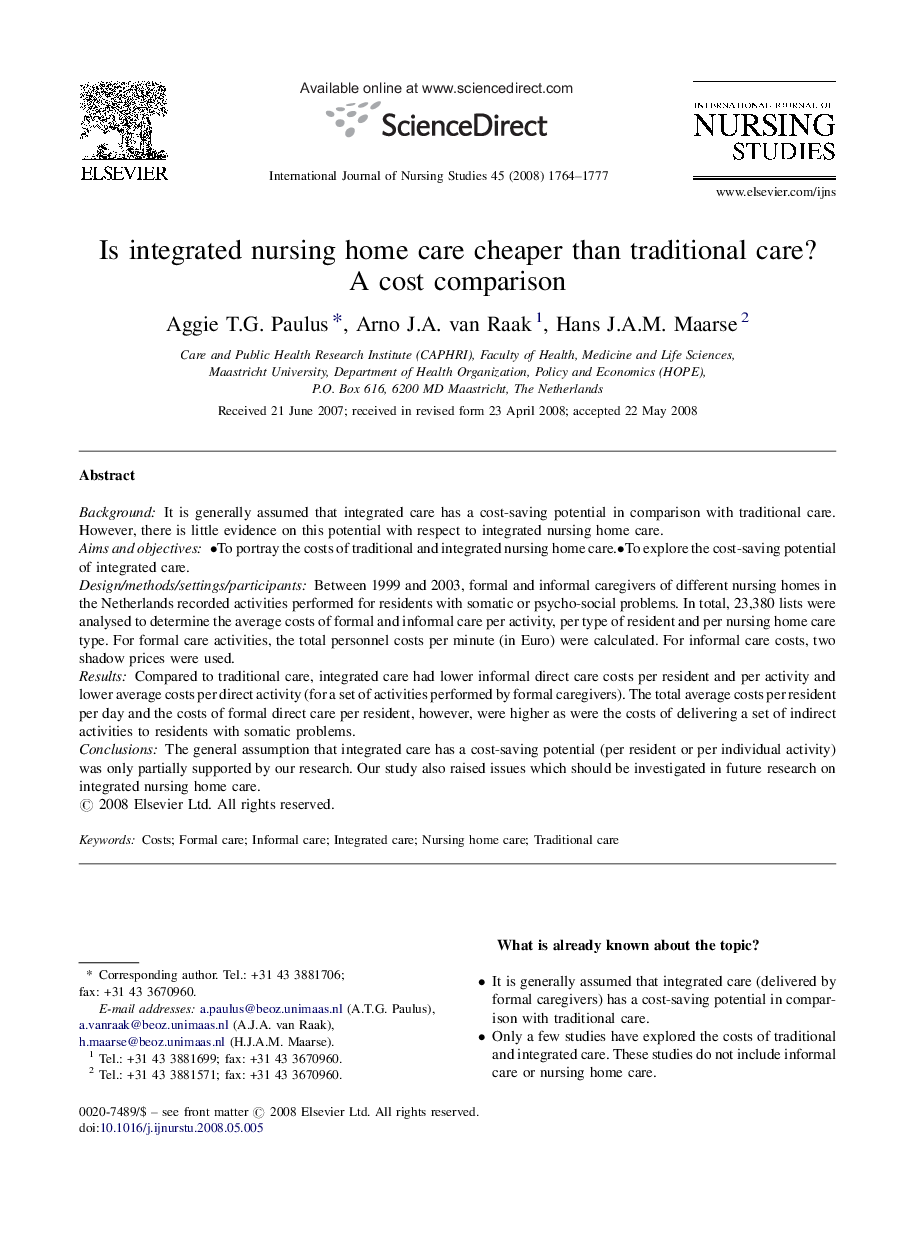| Article ID | Journal | Published Year | Pages | File Type |
|---|---|---|---|---|
| 1077374 | International Journal of Nursing Studies | 2008 | 14 Pages |
BackgroundIt is generally assumed that integrated care has a cost-saving potential in comparison with traditional care. However, there is little evidence on this potential with respect to integrated nursing home care.Aims and objectives•To portray the costs of traditional and integrated nursing home care.•To explore the cost-saving potential of integrated care.Design/methods/settings/participantsBetween 1999 and 2003, formal and informal caregivers of different nursing homes in the Netherlands recorded activities performed for residents with somatic or psycho-social problems. In total, 23,380 lists were analysed to determine the average costs of formal and informal care per activity, per type of resident and per nursing home care type. For formal care activities, the total personnel costs per minute (in Euro) were calculated. For informal care costs, two shadow prices were used.ResultsCompared to traditional care, integrated care had lower informal direct care costs per resident and per activity and lower average costs per direct activity (for a set of activities performed by formal caregivers). The total average costs per resident per day and the costs of formal direct care per resident, however, were higher as were the costs of delivering a set of indirect activities to residents with somatic problems.ConclusionsThe general assumption that integrated care has a cost-saving potential (per resident or per individual activity) was only partially supported by our research. Our study also raised issues which should be investigated in future research on integrated nursing home care.
